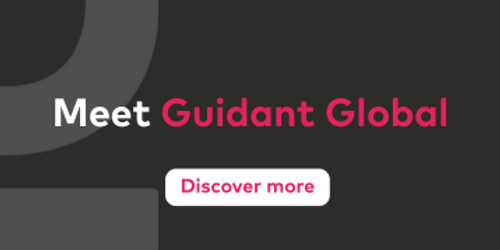

Author
Vice President, Enterprise Solutions
5 minutes
The pitfalls of DIY MSP: In-house vs outsourced workforce management
When it comes to in-house vs outsourced workforce management, each approach has its merits. Technically, smaller Contingent Workforce (CW) programs can be managed internally, particularly if the organization has a sizable talent acquisition team – and many decision makers feel like they retain a greater sense of control over a program by keeping things in-house.
However, there are challenges that come with a ‘ Internal Contingent Workforce (CW) Program. These are some of the most common pitfalls associated with ‘do-it-yourself’ managed service programs.
Program stagnation
Many of the clients we speak to admit that programs can get stagnant when managed internally. This is inevitable when you consider that the team is focusing heavily on tactical and operational tasks, and prioritizing getting the urgent needs filled. They reach a status quo, and it’s easy to get stuck in a rut.
In my experience, levels of innovation are also usually lower when the Contingent Workforce program is managed in-house. This is presumably because the view of the wider workforce that internal practitioners have, through no fault of their own, is limited to the current challenges they face. An external Managed Service Provider (MSP), on the other hand, stays abreast of emerging trends – and can consequently move quickly to disseminate fresh ideas across their client base.
Less access to the ‘big picture’
Internal talent management professionals have limited visibility over the wider market, and this doesn’t just impact levels of innovation, it also means that stand-alone programs don’t benefit from the wider advantages that the networks of an external MSP bring.
If you are running an internal CW Program you have autonomy and a level of control which you may feel comfortable with but it’s likely that you won’t have the extensive support network or power needed to keep ahead of the curve and react accordingly when it comes to issues such as incoming legislation and other external factors that may influence your program positively or negatively.
You’re unlikely to have the bandwidth to focus on factors outside of your peripheral vision that will impact your business until much too late – resulting in a rushed, reactive approach that is exposed to a number of risks.
A large MSP provider, managing billions in spend for a multitude of clients, on the other hand, has its own experts with specialist skills as well as a tight network of staffing suppliers, industry partners and tech providers.
At Guidant Global the level of reach we have in the market is unrivalled. What’s more, no two clients or programs are the same: We’re working across neutral vendor, master vendor, statement of work and tiered supplier networks and, as a result, are perfectly placed to advise on the best way to structure your program.
Furthermore, program design, implementation and management is also more detailed and dynamic than many decision makers imagine. It touches every part of an enterprise that uses contingent labor – and if you make even the smallest of mistakes, it creates ripples. Managing contingent workforce in this way is comparable to enterprise resource planning (ERP). It involves change management, coordination, and communication.
It’s complex: a project plan is typically 400 line items when you build a CW Program from scratch – it can be unfair to burden one or two people with such a challenge. And that is before you even consider who’s available and qualified to step up to the plate when your internal program team is impacted by annual leave, unexpected absence or a key player handing in their notice.
Questions around funding
When managing in-house, it’s crucial that you consider – and agree, whose budget the program will fall under, not only at the implementation stage but also into the future. If you’re setting up an internal program, ask yourself, how will it be funded? What is the budget? And how will ongoing costs associated with the program be covered?
Bear in mind that every time you make a change or expand the program, the cost of updating your Vendor Management System (VMS) technology could be significant.
Most MSP solutions in the US and UK are supplier-funded with very little to no out-of-pocket cost to the client. An MSP solution also has resources to make changes to your program as need dictates - where no extra budget is needed.
Access to AI, technology, and data
When running an CW program in-house, it can be expensive to license the technology you need to compete for talent. There are some great commercially available tools which can help map the market and benchmark salaries – but they come at a cost.
Here at Guidant Global, for example, we work with over 4,100 suppliers – and each of our clients has a subset of partners which is curated just for them based on need. We laser-target the suppliers that are doing a good job and recommend others that specialize in sourcing a specific type of worker or resources within a specific geography as your business grows and develops.
External MSPs also excel in leveraging AI and automation in workforce management to streamline processes and enhance efficiency. By partnering with an external MSP, businesses gain access to cutting-edge technology and sophisticated algorithms that can swiftly analyze vast amounts of data, predict trends, and automate routine tasks.
This advanced tech capability allows MSPs to optimize talent acquisition, ensuring the right candidates are matched with the right roles quickly and accurately. In addition to that, automation tools employed by MSPs can handle repetitive administrative tasks, freeing up time for strategic HR initiatives.
With AI-driven insights and automated processes, external MSPs provide a competitive edge in managing a dynamic and ever-evolving workforce landscape.
This means our customers have a wealth of information at their fingertips, which we can use to make informed decisions about who should supply the talent they need. This technology is also useful for firms looking to boost diversity. Our technology, for example, can be used to identify LGBTQ+ owned suppliers, suppliers which specialize in placing military veterans, or those which successfully fill flexible shifts.
Compliance challenges
There are always risks where talent management is concerned, however this is something that is not given enough attention by those implementing their own internal programs.
A specialist, external, MSP provider has a team of legal and compliance experts who are continually monitoring legislation – and the insight of these experts can pay dividends, especially if you have a large program, a global program, or you’re managing lots of different labor categories. Your MSP’s legal team offers an extra layer of protection and are always on hand to review policies –even job descriptions - to make sure that everything is as it should be. Of course, some internal programs may benefit from the help of great in-house legal teams.
However, some corporate lawyers might not have the same level of watchfulness or deep expertise to offer the support which is required in this area.
Beyond technology and compliance, external MSPs offer a comprehensive suite of workforce consultancy services designed to support and enhance various aspects of workforce management. These talent advisory services include strategic sourcing and talent acquisition, workforce planning, and employer branding initiatives as well as access to our subject matter experts in our customer experience office
MSP services provide expert guidance on developing competitive compensation packages, optimizing recruitment processes, and implementing effective diversity and inclusion strategies. By leveraging their extensive industry knowledge and experience, MSPs help businesses navigate complex labor markets and regulatory environments, ensuring they attract and retain top talent. With a focus on delivering tailored solutions, MSP solutions act as trusted advisors, enabling organizations to achieve their workforce objectives efficiently and sustainably.
Addressing the top three MSP myths
When it comes to working with an external MSP, there are several common misconceptions that can crop up:
- You lose control with an MSP – Some organizations think they lose control if they outsource to an MSP provider – that’s not the case. Think of the MSP as the ‘operators’ – we do the day-to-day work, but the client always makes the final decision. Thanks to advanced technology, today’s MSP solutions enable your business to retain real-time visibility and full control of the recruitment process, while still enjoying all the benefits that working with an external specialist brings.
- MSPs can be expensive – Staffing suppliers enjoy many efficiencies that an MSP provides, and their cost of doing business decreases when working with an MSP. As a result, few clients experience rate increases during implementation. As a matter of fact, the vast majority of first-generation MSP clients enjoy cost savings once an MSP is implemented.
- An external MSP will dilute EVP,or employer brand or culture – The best MSP service providers will help your business to define its value to potential candidates. With experts solely devoted to creating employer value proposition (EVP) creation and employer brand strategists within their ranks, MSPs can effectively market your business to candidates – even in difficult, traditionally challenging industries.
In-house vs outsourced workforce management: what’s the verdict?
It’s worth noting that many successful internal programs started as external programs – which is something that needs to be considered if you’re looking at MSP for the first time.
When choosing whether to develop your own internal CW Program or engage an outsourced MSP provider, there are lots of things to consider. An external MSP leverages unrivalled staffing experts who have the knowledge, experience and the tools to manage best-in-class, strategic workforce programs that drive true business value.
Next steps for your Managed Service Provider
Are you ready to take your talent management to the next level? Let Guidant Global help you navigate the complexities of workforce management with expert precision. Contact us today to discover how we can tailor our solutions to meet your unique needs, ensuring efficiency, compliance, and exceptional results.
Insights to drive workforce performance
Workforce insights in your inbox
Sign up for our newsletter with the latest workforce management news, insights, analysis and more.
Australia
Suite 1403, Level 14
309 Kent Street
Sydney
NSW 2000
United Kingdom
United States
27777 Franklin Road
Suite 600
Southfield
Michigan 48034








